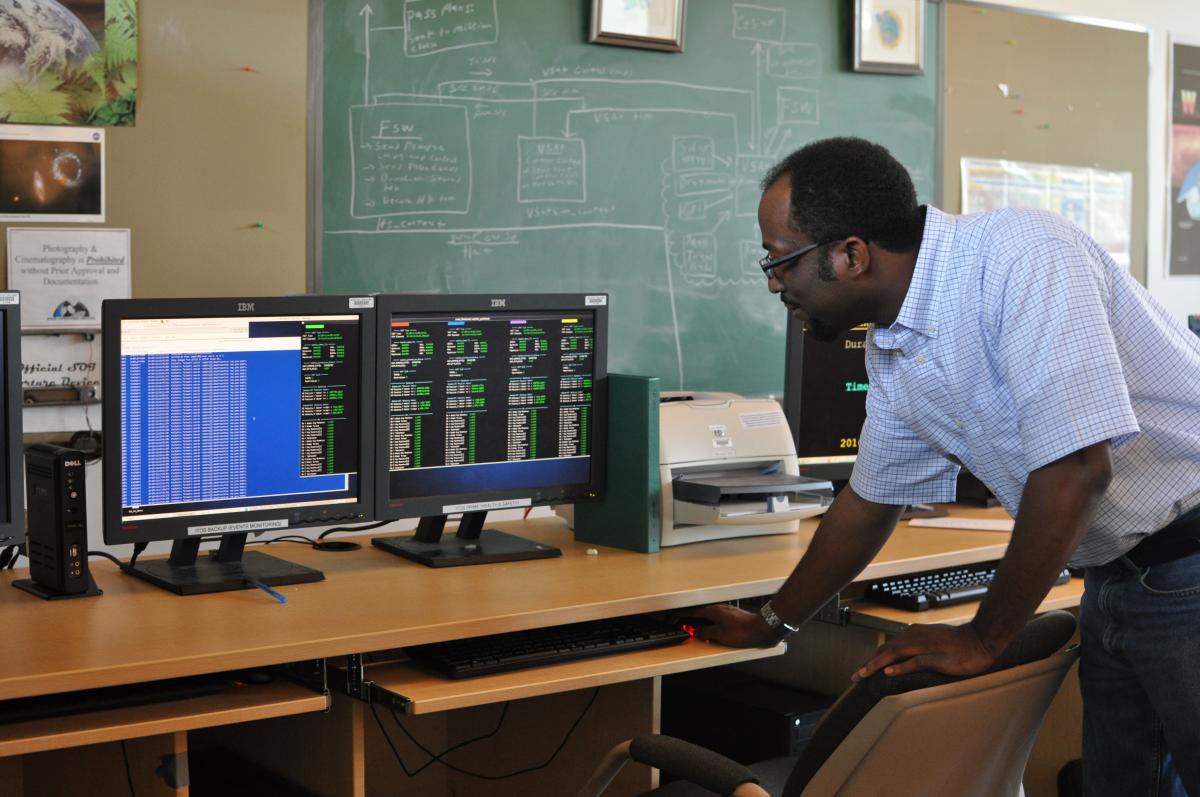Learning to command and control and spacecraft requires both knowledge and practice, but being able to obtain hands-on training is often a challenge for students. Opportunities to assist with actual missions are limited and – understandably, given the costs and high stakes involved –little direct responsibility is placed on students.
 With the help of the Hammers Company, a MD-based firm that has contributed to numerous NASA and commercial missions, Capitol Technology University now offers a resource that most space engineering programs lack: a platform for real-time training in a virtual satellite environment.
With the help of the Hammers Company, a MD-based firm that has contributed to numerous NASA and commercial missions, Capitol Technology University now offers a resource that most space engineering programs lack: a platform for real-time training in a virtual satellite environment.
At Capitol’s brand new Space Flight Operations Training Center (SFOTC) students use actual spacecraft software to control virtual satellites, replicating the scenarios they would actually face on the job. The system incorporates a number of tools pioneered by Hammers, which has supported more than 30 NASA missions with real-time simulation, flight, and ground software systems. The VirtualSat® spacecraft dynamic simulator “closes-the-loop” with the flight software simulating the actual spacecraft in orbit with sensors and actuators. Firing thrusters, performing spacecraft slews and monitoring the spacecraft telemetry is capable in the virtual environment. VirtualSat allows the instructor to inject errors into the spacecraft to train the student to detect anomalies and conduct recovery procedures to up-link to the spacecraft. The Galaxy® spacecraft command and telemetry system allows the student to actually operate the virtual spacecraft in real-time and function as a spacecraft operator.
“From the operator’s standpoint, when you’re on the system, it looks exactly like the spacecraft,” explains Marcel Mabson, a software test engineer at Hammers and a Capitol alumnus. He has been on site at the school for much of the spring and summer, and training lab managers and preparing the SFOTC for the fall semester.
Classroom learning, while vital, can only go so far when it comes to preparing students for flight ops, Mabson said.
“It’s one thing to read about it in books, but it’s a whole different story when you’re responsible for a real bird that costs several hundreds of million dollars to build and launch,” he said. “The SFOTC will give students a leg-up when they go into the real world and work in operations. They’ll have the experience.”
That includes experience with responding to unexpected events, such as a loss in communications or a systems failure. Instructors can introduce anomalies that the student will have to address. “For instance, your spacecraft has stopped talking to you,” Mabson says. “How do you recover from that? Through the software, students will be able to understand the flow and management in any number of scenarios.”
Capitol professor Rishabh Maharaja, a systems engineer for NASA’s Earth Observing 1 (EO-1) spacecraft, says the SFOTC will be integrated into several astronautical engineering courses at Capitol, and will be available to all students in the program.
It provides “real world experience while they’re still in school. And they can take that wherever they go, whether it’s to NASA or a private company, because the underlying principles are the same.”
Because other disciplines such as computer science and electrical engineering are involved in satellite operations, he anticipates that the new resource will be extended beyond AE to other programs at Capitol as well, he said.
Mabson sums up the SFOTC as “an amazing place for future engineers to learn the engineering behind spacecraft development, operations, commanding, and data analysis.”
“The fact that we can train the students to see how they react in different situations, to get the full stress as it would be in a real NASA mission, is definitely an advantage for the school to have,” he said.


